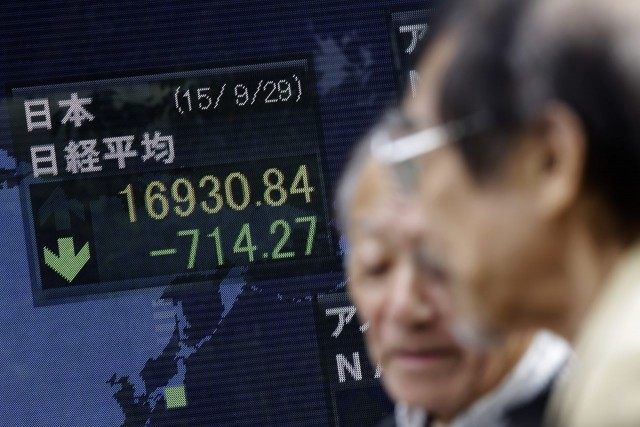(REUTERS) — In 2008 central banks, led by the Federal Reserve, rode to the rescue of the global financial system. Seven years on and trillions of dollars later they no longer have the answers and may even represent a major risk for the global economy.
A report by the Group of Thirty, an international body led by former European Central Bank chief Jean-Claude Trichet, warned on Saturday that zero rates and money printing were not sufficient to revive economic growth and risked becoming semi-permanent measures.
“Central banks have described their actions as ‘buying time’ for governments to finally resolve the crisis… But time is wearing on, and (bond) purchases have had their price,” the report said.
In the United States, the Federal Reserve ended its bond purchase program in 2014, and had been expected to raise interest rates from zero as early as June 2015.
But it may struggle to implement its first hike in almost 10 years by the end of the year. Market pricing in interest rate futures puts a hike in March 2016.
The Bank of England has also delayed, while the European Central Bank looks set to implement another round of quantitative easing, as does the Bank of Japan which has been stuck in some form of quantitative easing since 2001.
By subscribing, you agree to our terms of use & privacy policy. You will receive email marketing messages from Breitbart News Network to the email you provide. You may unsubscribe at any time.
Reuters calculates that central banks in those four countries alone have spent around $7 trillion in bond purchases.
The flow of easy money has inflated asset prices like stocks and housing in many countries even as they failed to stimulate economic growth. With growth estimates trending lower and easy money increasing company leverage, the specter of a debt trap is now haunting advanced economies, the Group of Thirty said.
The Fed has pledged that when it does hike rates, it will be at a slow pace so as not to strangle the U.S. economic recovery, one of the longest, but weakest on record in the post-war period. Yet, forecasts by one regional Fed president shows he expects negative rates in 2016.
AN END TO “EXTEND AND PRETEND”
Most policymakers at the semi-annual IMF meetings this week have presented relatively upbeat forecasts for the world economy and say risks have been largely contained. The G30, however, warned that the 40 percent decline in commodity prices could presage weaker growth and “debt deflation”.
Rates would then have to remain low as central banks would be forced to maintain or extend their bond programs to try and bolster growth and the price of financial assets would fall.
That is not just a developed-world problem. In China, credits to state-owned enterprises and increasingly by the shadow banking sector have been a driving force in an investment splurge in the world’s second largest economy.
According to an IMF report issued this week, there is “excessive” lending of $3 trillion in emerging market economies, an average of 15 percent of gross domestic product, which runs the risk of unwinding should economic conditions worsen.
“Capital losses would affect many investors, including banks, and the process of extend and pretend for poor loans would have to come to a stop,” the G30 report said.
Even in a more benign economic outlook, central banks will have a tough time exiting easy money policies and may face demands to hold rates low. The IMF has repeatedly urged the Fed not to hike rates yet.
None of the world’s major central banks are remotely close to hitting their inflation targets and many of them are haunted by memories of high inflation. The European Central Bank was born with, and still has, a sole inflation mandate.
With the consequences of an exit from easy money so unpredictable, the G30 said the risk was of exiting too late for fear of sparking another crisis.
“Faced with uncertainty, the natural default position is the status quo,” the G30 said.

COMMENTS
Please let us know if you're having issues with commenting.